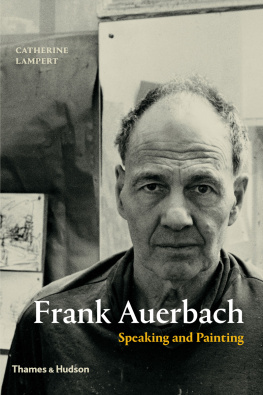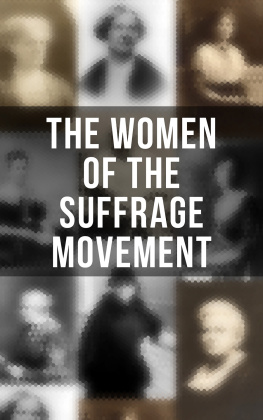A PEOPLES
ART HISTORY
OF THE UNITED STATES
250 YEARS OF ACTIVIST ART AND ARTISTS WORKING IN SOCIAL JUSTICE MOVEMENTS
Nicolas Lampert

NEW YORK
LONDON
2013 by Nicolas Lampert
All rights reserved.
No part of this book may be reproduced, in any form, without written permission from the publisher.
A longer version of (Haymarket: An Embattled History of Static Monuments and Public Interventions) was published in Realizing the Impossible: Art Against Authority, Josh MacPhee and Eril Reuland, editors (Oakland: AK Press, 2007). Permission to reprint this new version of the essay was granted by AK Press.
Requests for permission to reproduce selections from this book should be mailed to: Permissions Department, The New Press, 38 Greene Street, New York, NY 10013.
First published in the United States by The New Press, New York, 2013
This paperback edition published by The New Press, 2015
Distributed by Perseus Distribution
LIBRARY OF CONGRESS CATALOGING-IN-PUBLICATION DATA
Lampert, Nicolas, 1969
A peoples art history of the United States : 250 years of activist art and artists working in social justice movements / Nicolas Lampert.
pages cm (New press peoples history)
Includes bibliographical references and index.
ISBN 978-1-62097-133-8 (e-book) 1. ArtPolitical aspectsUnited States. 2. History in art. 3. Art, AmericanThemes, motives. I. Title.
N72.P6L37 2013
701'.030973dc23
2013014977
The New Press publishes books that promote and enrich public discussion and understanding of the issues vital to our democracy and to a more equitable world. These books are made possible by the enthusiasm of our readers; the support of a committed group of donors, large and small; the collaboration of our many partners in the independent media and the not-for-profit sector; booksellers, who often hand-sell New Press books; librarians; and above all by our authors.
www.thenewpress.com
Book design by Josh MacPhee/Antumbradesign.org
Composition by Westchester Book Composition
This book was set in Chaparral Pro and DIN Schrift
10 9 8 7 6 5 4 3 2 1
To the activist-artists and the artist-activists
Contents
TURNING HISTORY ON ITS HEAD opens up whole new worlds of possibility. Once, historians looked only at societys upper crust: the leaders and others who made the headlines and whose words and deeds survived as historical truth. In our lifetimes, this has begun to change. Shifting historys lens from the upper rungs to the lower, we are learning more than ever about the masses of people who did the work that made society tick.
Not surprisingly, as the lens shifts the basic narratives change as well. The history of men and women of all classes, colors, and cultures reveals an astonishing degree of struggle and independent political action. Everyday people played complicated historical roles, and they developed highly sophisticated and often very different political ideas from the people who ruled them. Sometimes their accomplishments left tangible traces; other times, the traces are invisible but no less real. They left their mark on our institutions, our folkways and language, on our political habits and vocabulary. We are only now beginning to excavate this multifaceted history.
The New Press Peoples History Series roams far and wide through human history, revisiting old stories in new ways, and introducing altogether new accounts of the struggles of common people to make their own history. Taking the lives and viewpoints of common people as its point of departure, the series reexamines subjects as different as the American Revolution, the history of sports, the history of American art, the Mexican Revolution, and the rise of the Third World.
A peoples history does more than add to the catalogue of what we already know. These books will shake up readers understanding of the pastjust as common people throughout history have shaken up their always changeable worlds.
Howard Zinn
Boston, 2000
A FEW YEARS BACK, a friend caught me off guard when he asked, Why arent the artists of today responding in force to the political crisis of the moment? He mentioned some of the visual artists who were radicalized by the Vietnam WarMark di Suvero, Leon Golub, Nancy Spero, Ad Reinhardt, Hans Haacke, Carl Andre, and so on, and said that nothing approaching that level of engagement has taken place in the decades that have followed. My answer to him was simple. I told him that artists were responding, and more important, he was looking in the wrong places.
My colleague was drawing names from the art world (primarily the New York art world of galleries and museums), while I was looking elsewhere. I suggested that he look to the artists, designers, photographers, and creative agitators who took part in the civil rights movement, the black power movement, the Chicano/Chicana movement, and the red power movement. That he look to the artists in the antinuclear movements, the AIDS movements, the antiwar movements, the environmental movements, the antiglobalization movements, the prison-justice movements, and the feminist movements that did not end in the 1970s. If he wanted to go further back, he could look at the artists in the 1930s federal art projects and labor unions, those in the suffrage movements, the Industrial Workers of the World (IWW), and so on.
However, his point was clear. Many people look to the world of museums and galleries when they think of visual art, including political art. My argument was that these places are not the primary site for activist art. Politically engaged art can and does exist in museums and galleries, but activist art is altogether different and is firmly located in movements and in the streets and communities that produce these movements. My deeper point was that there is another art history that is overlookeda history of activist art.
This study addresses this parallel history. Some examples draw upon movement culturethe art, objects, ephemera, photographs, and visual culture that emerges directly out of movements by the participants themselves. This work is done by individuals who may or may not self-identify as an artist or a producer of media. These individuals more likely consider themselves activists firstpeople who organize and at times employ visual tactics to help their causes succeed.
In contrast, other examples in this study focus upon individuals who identify first and foremost as an artistindividuals who were often trained in art academies and art schools. These individuals (or art collectives) chose to locate their art within a movementrather than a gallery or a museumbecause they were inspired by the cause and decided to join the movement in solidarity as an artist.
Both paths takenmovement culture and the work created by artists aligned with social-justice movementsare equally significant. And both paths fundamentally change the role of art in society. Likewise, when the definition of an artist becomes more flexible (for example: an artist is anyone who creates visual culture), it breaks down the elitism in the visual arts and challenges the notion that only a select few people with special talents can participate in the visual-art field. In short, it makes art accessible to all.
Curiously, or perhaps not, the term visual artist is often the biggest impediment to artists themselves in the modern era. Visual artist comes with its own set of cultural biases, internalized dilemmas, fixed paths, and stereotypes









